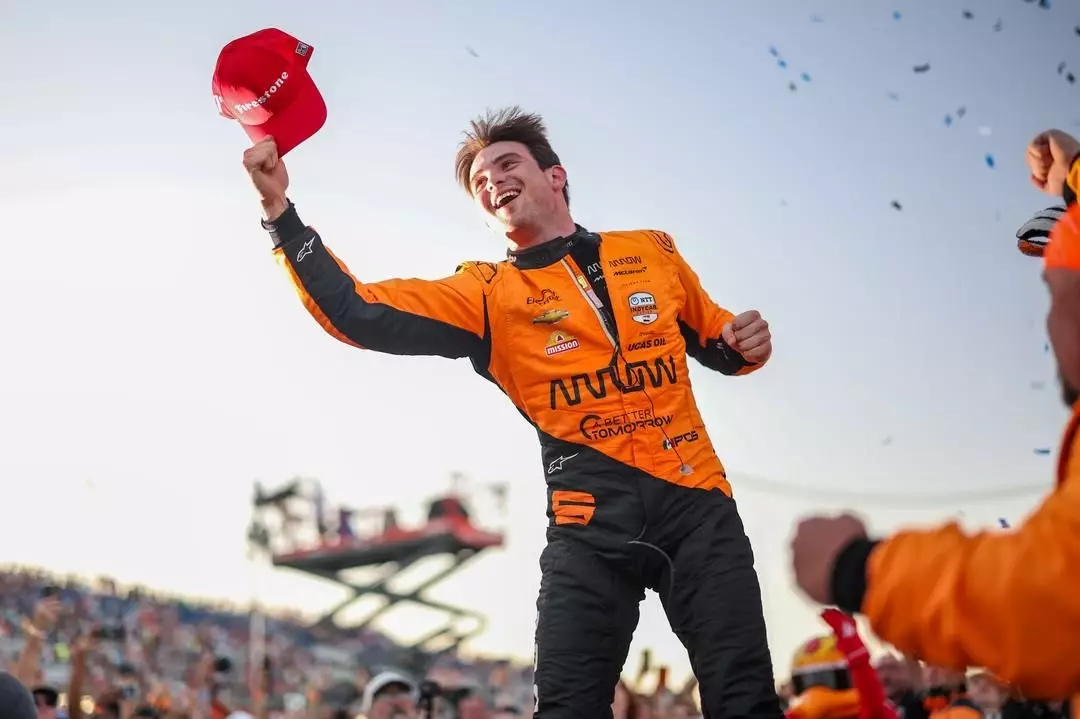The Return of IndyCar to Texas Opportunities and Challenges Ahead
Hey there, fellow racing enthusiasts! Have you ever felt the thrill of the engines roaring, the speed, and the adrenaline rush of an IndyCar race? If you haven’t yet, or even if you have, there’s some exciting news on the horizon. The IndyCar Series is making a grand return to Texas with the much-anticipated Grand Prix of Arlington in March 2026. As a dedicated fan myself, I can tell you that this is not just a race; it’s an event that’s poised to shake things up in both the motorsport world and the local community.
As I dive into what this means for us fans and the sport overall, I can’t help but share the optimism of Pato O’Ward, a standout driver for Arrow McLaren. He’s been vocal about how this return brings numerous advantages, though he’s also wise enough to point out some concerns that need addressing for the event to truly succeed. So let’s explore what lies ahead for IndyCar in Texas and why it matters to all of us who love a good race.
Key Takeaways
- The Grand Prix of Arlington will take place on a newly designed 2.73-mile street circuit.
- Partnerships with local sports franchises like the Dallas Cowboys could broaden IndyCar’s audience.
- Financial strategies and logistical planning are crucial for the success of this event.
The Circuit and Its Cultural Significance
The heart of this event lies in its new temporary street circuit, which stretches over 2.73 miles and intersects iconic landmarks such as AT&T Stadium and Globe Life Field. Imagine a race that doesn’t just entertain but also pays homage to Arlington’s rich sports culture. For those of us who live for the excitement that only large-scale events can bring, this IndyCar race promises to be more than just laps around a track; it’s about creating an atmosphere where motorsport meets local pride.
This venture isn’t just an ambitious project; it’s a celebration of modern motorsport in a city already pulsating with energy from football games and baseball matches. The potential to attract massive crowds is immense, offering fans an unforgettable experience while driving significant ticket sales and boosting local revenue. It’s about immersing yourself in the energy and excitement that only comes when sports collide with city life.
Strategic Partnerships Amplifying Reach
One intriguing aspect of this event is its partnership with the Dallas Cowboys, a franchise legendary for its cultural impact and vast following. Aligning with such a powerhouse brand presents a unique marketing advantage for IndyCar. Jerry Jones, owner of the Cowboys, is practically a household name, and his involvement could draw attention from both traditional motorsport fans and those new to racing.
This crossover appeal offers IndyCar an opportunity to extend its reach beyond its current audience base. Imagine fans who might have come for the Cowboys’ legacy staying for the exhilarating world of open-wheel racing. It’s about capturing hearts and expanding horizons, making sure everyone—whether they’re die-hard motorsport fans or newcomers—finds something thrilling here.
Navigating Financial Realities
But let’s talk dollars and cents because that’s where things get interesting. While there’s optimism about charging premium prices similar to Formula 1 events, O’Ward wisely cautions against assuming too much too soon. Historically, IndyCar audiences haven’t shown the same willingness to spend big bucks like $10,000 paddock tickets seen in Formula 1. It raises an important question: Can IndyCar tap into high-end markets without alienating loyal fans?
The answer lies in delivering value that justifies higher price tags. It’s about offering experiences so exceptional that attendees feel their investment is worthwhile. Strategic pricing will be key here—ensuring everyone feels they’re getting what they pay for without compromising on quality or accessibility for long-time supporters.
Logistical Challenges Ahead
Excitement alone won’t guarantee success—there’s significant work required behind the scenes. Managing thousands of attendees on a temporary circuit demands comprehensive logistical planning. From traffic management to security measures, every detail must be meticulously executed to ensure smooth operations throughout race weekend.
A poorly managed event can overshadow even the most thrilling races; thus meticulous attention is essential so each guest leaves with nothing but positive memories—and maybe some great photos too! This seamless blend between mega sports events calls for dedication from organizers who understand both challenges involved and expectations held by eager fans waiting eagerly at every turn.
Final Thoughts
The Grand Prix of Arlington stands as both beacon opportunity complex set challenges facing today’s IndyCar Series landscape—a chance redefine itself within ever-evolving world motorsports while staying true roots long-time enthusiasts alike! As we look forward March 2026 eagerly anticipate witnessing firsthand how these dynamics play out course weekend festivities unfold before our eyes!
Ultimately though whether newcomers seasoned veterans there’s something special waiting every corner track leaving us all buzzing anticipation next chapter unfolding right here heart Texas! Let’s embrace journey together see where takes us excitedly await what lies beyond horizon rallying around shared passion bringing community closer through love speed competition spirit camaraderie found nowhere else quite like here homegrown backyard adventure awaits ready buckle down enjoy ride ahead much-needed breath fresh air midst whirlwind change progress pushing boundaries limits breaking barriers along way paving path brighter future ahead everyone involved—here’s hoping success boundless possibilities endless time will tell winding road leads next!
IndyCarTexasmotorsportGrand Prix of Arlington


Leave a Reply